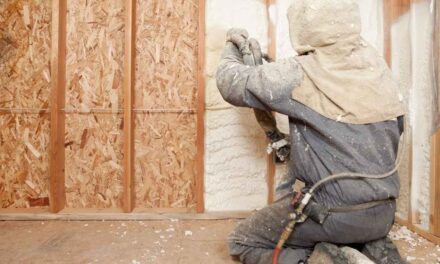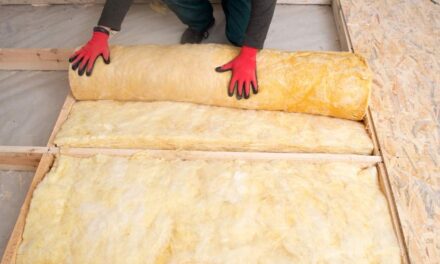Loft and Roof Insulation As the colder months approach, keeping your home warm and energy-efficient becomes a top priority. One of the most effective ways to achieve this is through loft and roof insulation. Not only does it help maintain a comfortable temperature, but it also reduces energy bills and contributes to a greener environment. If you’re considering loft and roof insulation in the UK, this guide will walk you through the benefits and provide step-by-step installation tips.
The Benefits of Loft and Roof Insulation
1. Energy Efficiency and Cost Savings
Heat rises, and without proper insulation, up to 25% of your home’s warmth can escape through the roof. Loft and roof insulation act as a barrier, trapping heat inside and reducing the need for constant heating. This can significantly lower your energy bills, saving you hundreds of pounds annually.
2. Improved Comfort
Insulation helps maintain a consistent temperature throughout your home, eliminating cold spots and drafts. Whether it’s winter or summer, your home will stay warmer in the cold months and cooler during heatwaves.
3. Reduced Carbon Footprint
By using less energy to heat your home, you’re reducing your carbon emissions. This makes loft and roof insulation an eco-friendly choice, helping the UK move closer to its net-zero targets.
4. Prevents Condensation and Damp
Proper insulation reduces the risk of condensation forming in your loft, which can lead to damp and mould. This not only protects your home’s structure but also improves indoor air quality.
5. Increased Property Value
A well-insulated home is an attractive feature for potential buyers. It demonstrates energy efficiency and can boost your property’s market value.
Step-by-Step Guide to Installing Loft and Roof Insulation
Installing loft and roof insulation is a manageable DIY project, but for more complex jobs, it’s best to hire a professional. Here’s a step-by-step guide to help you get started:
Step 1: Assess Your Loft Space
Before you begin, inspect your loft to determine the type of insulation you need. Check for any existing insulation, damp issues, or structural problems. Measure the area to calculate how much insulation material you’ll require.
Step 2: Choose the Right Insulation Material
There are several types of insulation materials available, including:
- Mineral Wool: Easy to install and fire-resistant.
- Sheep’s Wool: Eco-friendly and effective.
- Rigid Insulation Boards: Ideal for sloping roofs.
- Spray Foam: Provides excellent coverage but requires professional installation.
For most UK homes, mineral wool is a popular and cost-effective choice.
Step 3: Prepare the Loft
Clear your loft of any stored items and ensure the space is clean and dry. Check for gaps around pipes, wires, and chimneys, and seal them with expanding foam or caulk to prevent heat loss.
Step 4: Install the Insulation
- Between Joists: If your loft is used for storage, lay insulation between the joists. Roll out the insulation material evenly, ensuring it fits snugly without compressing.
- Over Joists: For better thermal performance, add a second layer of insulation perpendicular to the joists. Use insulation boards or additional rolls.
- Sloping Roofs: If you’re insulating a sloping roof, use rigid insulation boards cut to fit between the rafters. Ensure there’s adequate ventilation to prevent condensation.
Step 5: Insulate the Loft Hatch
Don’t forget the loft hatch! Use draught-proofing strips around the edges and attach insulation material to the back of the hatch to prevent heat loss.
Step 6: Check for Ventilation
Proper ventilation is crucial to prevent condensation and damp. Ensure that eaves vents are not blocked by insulation and that air can circulate freely.
Step 7: Safety First
Wear protective clothing, gloves, and a mask when handling insulation materials. If you’re unsure about any part of the process, consult a professional.
Additional Tips for Effective Insulation
- Consider Professional Help: If your loft is hard to access or you’re dealing with a complex roof structure, hiring a professional installer is a wise investment.
- Check for Grants: In the UK, government schemes like the Energy Company Obligation (ECO) may offer financial assistance for insulation projects.
- Combine with Other Measures: For maximum efficiency, pair loft insulation with other energy-saving measures like double glazing and draught-proofing.
- Regular Maintenance: Inspect your insulation periodically to ensure it’s in good condition and hasn’t been disturbed by pests or damp.
Conclusion
Loft and roof insulation are essential for keeping your home warm, reducing energy bills, and contributing to a sustainable future. With the right materials and installation techniques, you can enjoy a cosier, more energy-efficient home throughout the year. Whether you tackle the project yourself or hire a professional, the benefits far outweigh the effort.
If you’re in the UK and considering loft and roof insulation, now is the perfect time to take action. Not only will you stay warm this winter, but you’ll also make a positive impact on your wallet and the environment.
By following this guide, you’ll be well on your way to a warmer, more energy-efficient home. Stay cosy!.
https://econgn.com/underfloor-insulation-is-it-worth-the-investment/





